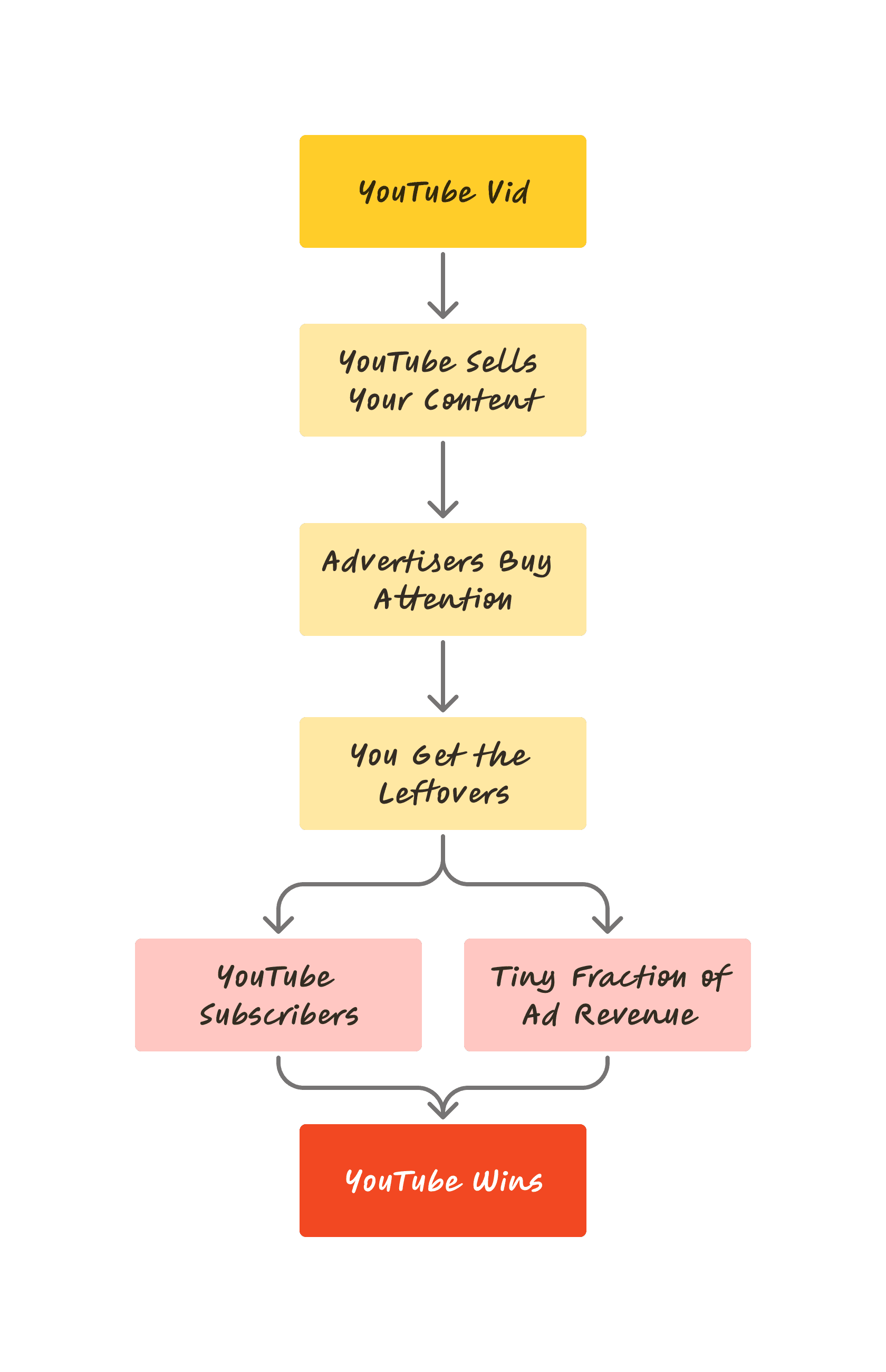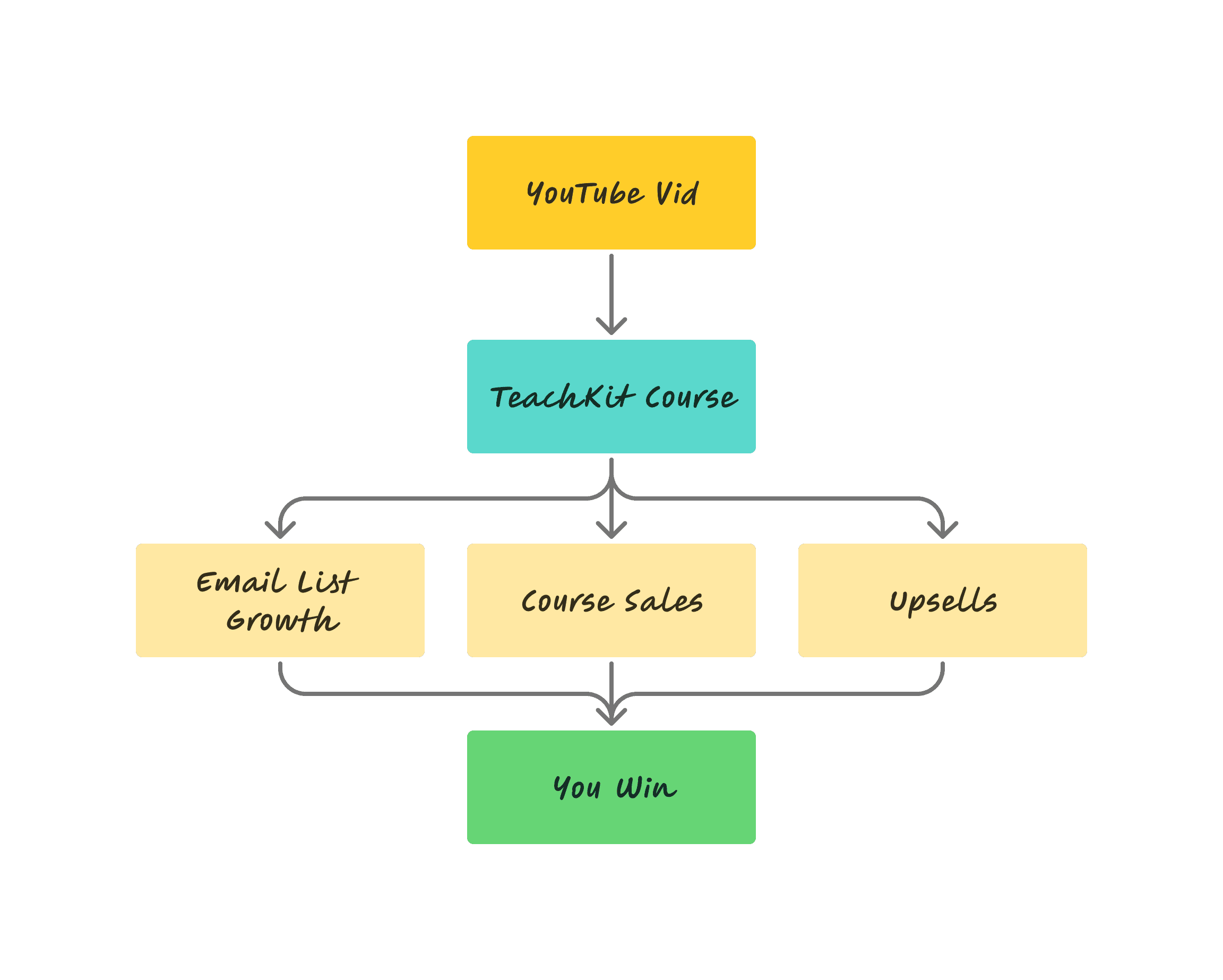Escaping Content Farms
A sure-fire way you as a creator can take ownership of the audience you build on social media.
Social media is the new frontier for communication—whether to share a message, an idea, or pure entertainment. In the 1950s and 1960s, you needed the crown of a radio or television show to reach an audience. Today, everyone carries a broadcasting studio in their pocket in the form of a smartphone.
If you’ve ever posted on X, published a YouTube video, or danced on TikTok, you already know this. The opportunity social media grants is immense: you can now reach people you’ve never met before, and with algorithm-driven feeds, even someone with no following can suddenly reach tens of thousands—or even millions.
It’s possible to become an overnight sensation. But for most creators, building an audience still takes months or years of steady work. And despite the promise of access, the model comes with serious caveats.
Who Really Owns Your Audience?
Consider this: you upload videos to YouTube. They get hundreds of thousands of views, then millions. Eventually, you build 500,000 subscribers. That feels like your audience. But there’s no way to contact those people outside of YouTube.
The truth is stark: YouTube holds the keys. If its algorithm shifts or its community guidelines flag your content, it can shut the door to your audience overnight.
The same is true for TikTok, Instagram, Facebook, X, Twitch, Rumble—every major platform. They provide you access but also control it absolutely.
The Content Farm Model
I call these platforms content farms. They exist almost exclusively on the backs of the millions of videos, posts, and live streams uploaded by creators.
Think of YouTube as a farm. Creators plant crops, hoping they grow. YouTube takes the harvest, keeps the lion’s share, and gives you a small fraction in return. That fraction may still be more than you’d earn on your own—but most of the value goes to the platform and its advertisers.

Yes, platforms also make money through subscriptions, memberships, or direct payments, but advertising remains the dominant engine. In practice, unless you achieve millions upon millions of views, you are producing content for far less than minimum wage.
This isn’t a secret. It’s the deal we all agree to when posting. But if we’re objective, it looks like this: creators pour time and effort into videos, advertisers profit from the attention, and platforms reap the majority of the money.
Shifting the Equation
I’m not making an ethical argument about whether this is “good” or “bad.” What matters is recognizing that you can leverage social media attention to build an audience you own and control.
The proven tool? Email.
Why Email Lists Still Work
Email lists have been around since the 1990s, yet they remain the most bulletproof method of building an audience. Unlike followers, an email list is independent of any platform.
Traditionally, creators have captured emails by offering a downloadable PDF, white paper, or e-book. That tactic worked for years, but today it feels stale. Asking people to download another PDF in exchange for their address feels like just another marketing trick—especially in a landscape dominated by video content.
So what’s a better trade?
From PDFs to Free Courses
That question is at the heart of TeachKit. While TeachKit can absolutely help you sell courses, its most valuable feature may be the ability to create a free course with ease.
Here’s why this matters: instead of offering a static PDF, you offer an engaging online course. It could be as simple as a handful of short videos, or as involved as a 50 video lesson class. The key is that it’s valuable. In return, you ask only for a first name, an email address, and a password so the student can sign in.
Until recently, this kind of setup required:
- building a landing page,
- finding a place to host videos,
- locking access to those videos, and
- creating a way for students to track progress.
And too often, online courses were cluttered with nonsensical quizzes and worksheets—busywork that wastes time.
TeachKit eliminates all of that. It automatically generates a landing page, integrates with YouTube for private video hosting, and tracks progress. Most importantly, it collects names and email addresses, which you can funnel directly into your Kit account for email marketing or download as a CSV.
Turning Attention Into Ownership
Now, every piece of social content you create—on YouTube, TikTok, Instagram, or anywhere else—becomes a funnel. In your video or bio, you can say: Check out my free course on how to learn X, Y, Z.

That traffic, which once belonged to the platform, now moves into an email list you own. From there, the possibilities multiply:
- Upsell students into paid courses.
- Pitch coaching or consulting services.
- Launch a book or product to a warm audience.
The greatest benefit? Neither TeachKit, YouTube, TikTok, Instagram, nor Twitch owns that list. You do.
Your Farm, Your Harvest
Social media gives exposure, but it doesn’t guarantee stability. The platforms will always farm your content for their gain. But with a strategy to capture attention and convert it into an email list, you regain control.
TeachKit makes this simple. With it, you can stop farming for someone else—and start reaping your own harvest.